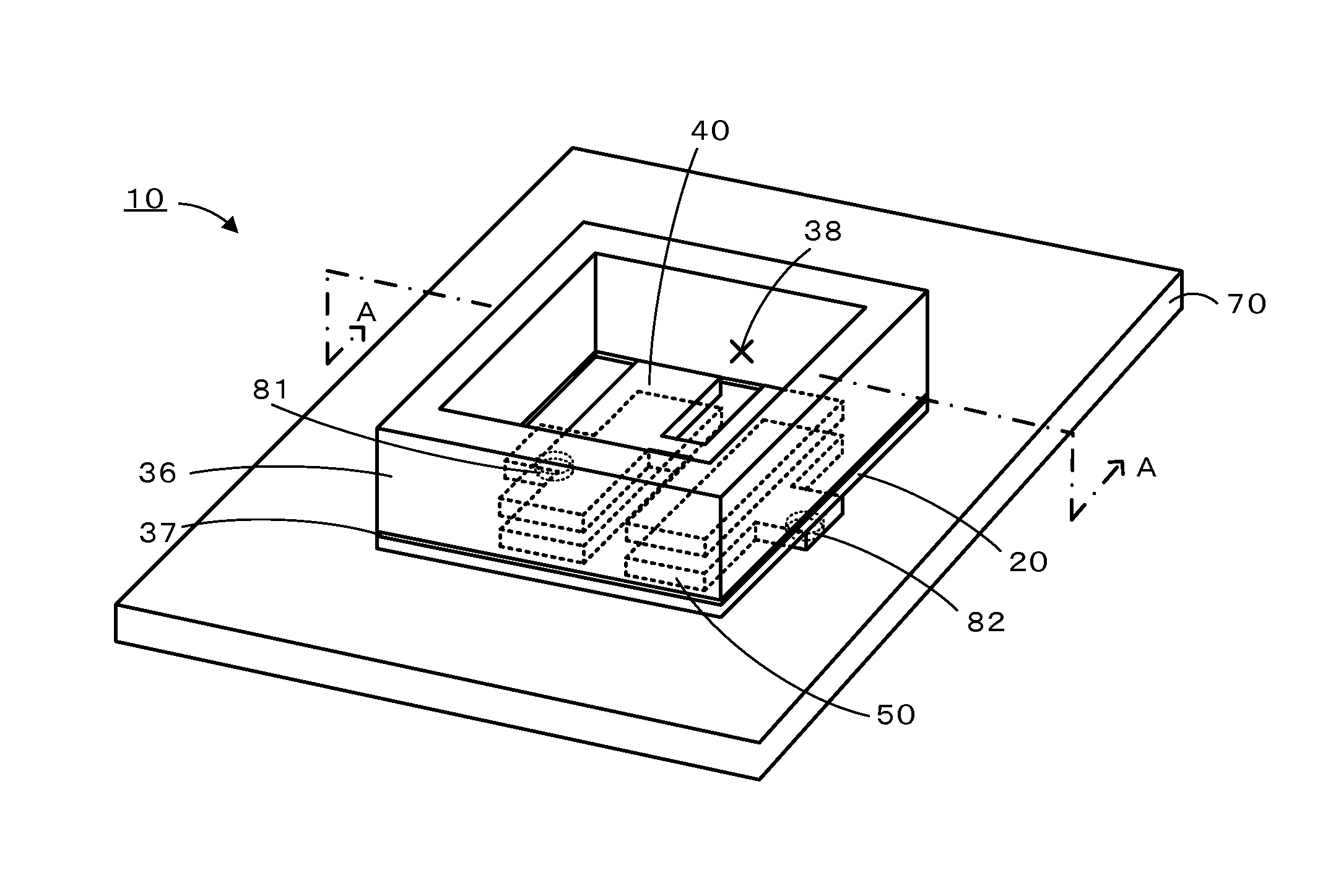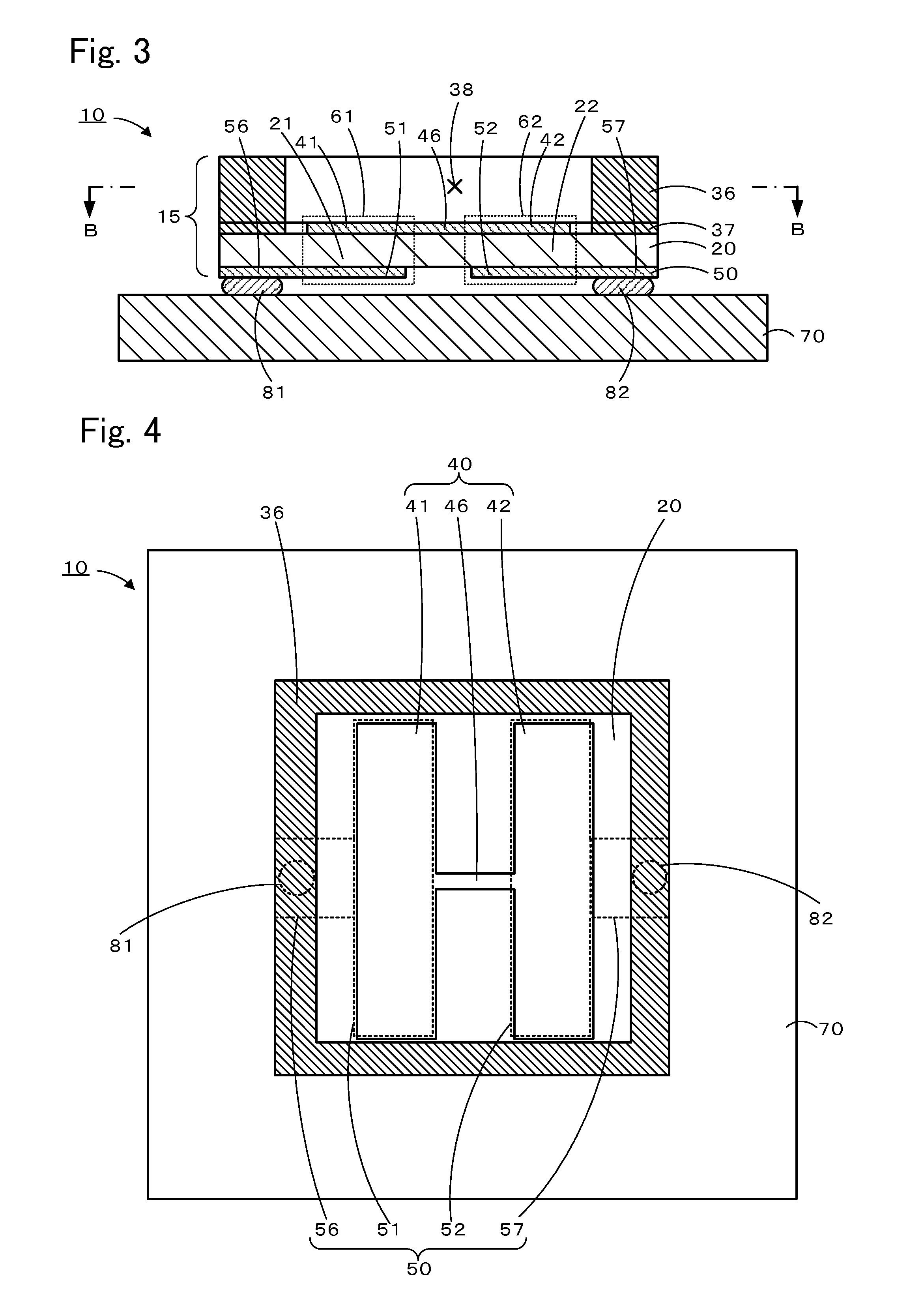Infrared detection element, infrared detection module, and manufacturing method therefor
a technology of infrared detection and manufacturing method, which is applied in the direction of optical radiation measurement, instruments, measurement devices, etc., can solve problems such as electric charge generation, and achieve the effect of suppressing the deformation of the pyroelectric substra
- Summary
- Abstract
- Description
- Claims
- Application Information
AI Technical Summary
Benefits of technology
Problems solved by technology
Method used
Image
Examples
experimental example 1
[0076]As Experimental Example 1, the infrared detection module 10 of the embodiment was manufactured by the above-described method.
[0077]First, a pyroelectric substrate 120 formed by an LT substrate including an OF portion and having a diameter of 4 inches and a thickness of 350 μm (having a thermal expansion coefficient of 17 ppm / K) was prepared (FIG. 7(a)). As the pyroelectric substrate 120, a 48° Y-offcut plate (cut angle) θ=48° was used. The pyroelectric substrate 120 is to be divided into pyroelectric substrates 20 by dicing. Subsequently, multiple front-side metal layers 140 made of nickel and chromium were formed on a front side of the pyroelectric substrate 120 (FIG. 7(b), FIG. 8(a)). The front-side metal layers 140 were formed by vacuum evaporation using a metal mask that covered the pyroelectric substrate 120 except for areas where the front-side metal layers 140 were to be formed. Vacuum evaporation was performed by first depositing a chromium film at a deposition rate of...
experimental examples 2 to 10
[0084]Infrared detection modules 10 of Experimental Examples 2 to 10 were manufactured in a manner similar to that adopted in Experimental Example 1 except that the thermal expansion coefficient of a glass substrate to become a first substrate 36 was different from that adopted in Experimental Example 1.
experimental example 11
[0085]An infrared detection module 10 of Experimental Example 11 was manufactured in a manner similar to that adopted in Experimental Example 1 except that a circuit board having electric wiring on an alumina substrate (thermal expansion coefficient: 7 ppm / K) was used as a second substrate 70.
PUM
| Property | Measurement | Unit |
|---|---|---|
| thickness | aaaaa | aaaaa |
| thickness | aaaaa | aaaaa |
| cut angle | aaaaa | aaaaa |
Abstract
Description
Claims
Application Information
 Login to View More
Login to View More - R&D
- Intellectual Property
- Life Sciences
- Materials
- Tech Scout
- Unparalleled Data Quality
- Higher Quality Content
- 60% Fewer Hallucinations
Browse by: Latest US Patents, China's latest patents, Technical Efficacy Thesaurus, Application Domain, Technology Topic, Popular Technical Reports.
© 2025 PatSnap. All rights reserved.Legal|Privacy policy|Modern Slavery Act Transparency Statement|Sitemap|About US| Contact US: help@patsnap.com



